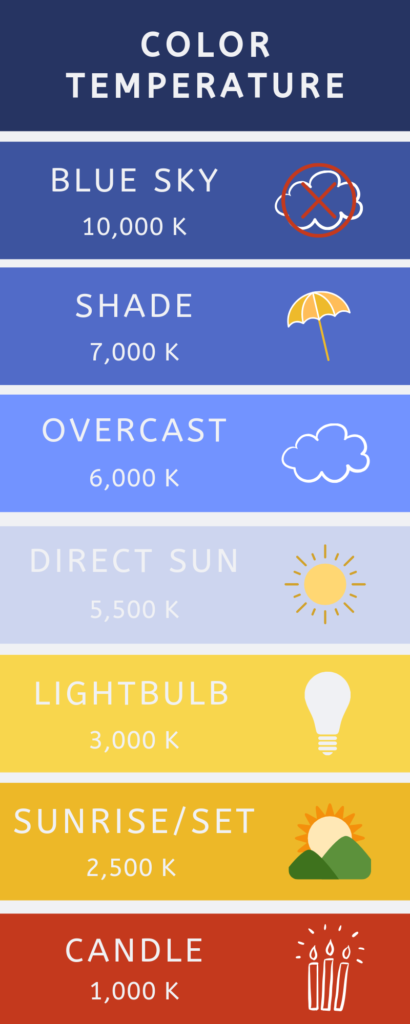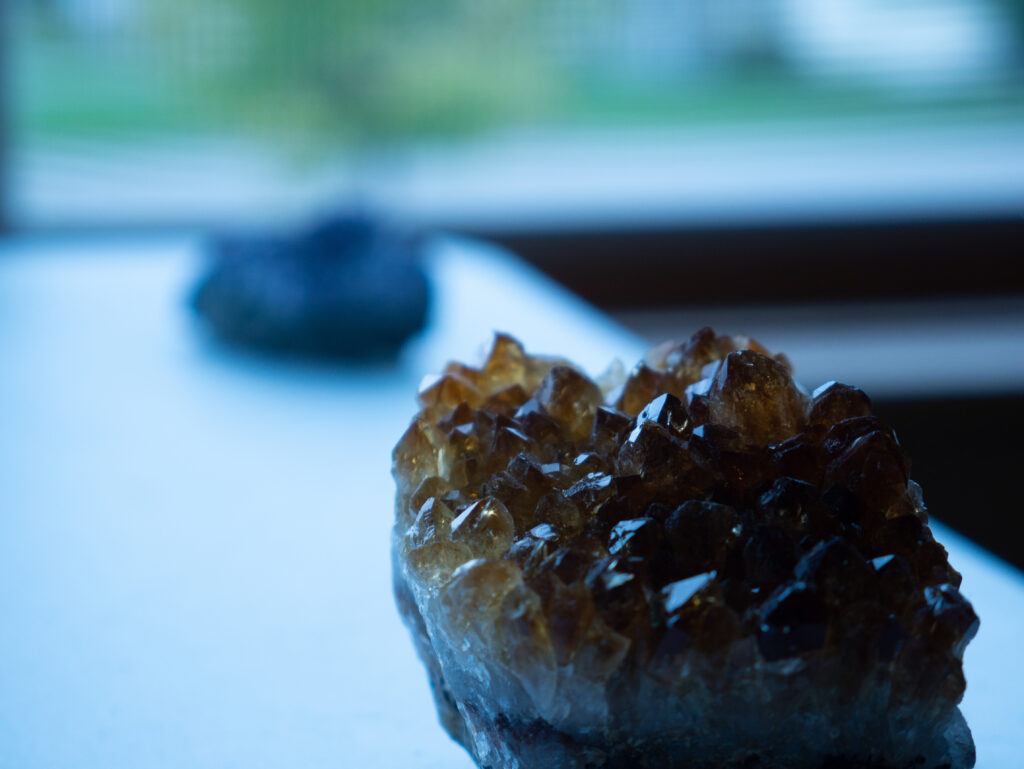The white balance setting is the way we adjust the temperature of the color in the image. Color temperature is measured in Kelvin (K). Higher numbers are bluer in color and lower numbers yellow to reddish. White is in the middle at around 4,500 K. The infographic below shows the association of common photography lighting with its temperature in Kelvin.

Auto White Balance (AWB)
There is a sensor in modern cameras that detects the color temperature of the scene you are photographing and sets the white balance accordingly. This sensor is usually correct and AWB can be used most of the time. It is not perfect though. A large area of a single color can fool the sensor into the incorrect white balance. For example, a bright red firetruck could trick the sensor into thinking the image is redder than it really is. It will then set the white balance to a high level and make the image too blue.
Presets
When you don’t think AWB is cutting it, what do you do? Tell your camera what the lighting is like in your scene by using a preset setting. Every brand of camera is different, but you will likely have these presets to choose from.





Using these presets in the way described above is to get a more accurate color in your photograph. Maybe you don’t want that. Try using each preset in different lighting situations. You may like what you find.
Manual
Should you use manual? Maybe. Between AWB and all the presets, you might have all the white balance control you need. But if you want the most accurate color you can get or want that extra bit of creative power, use manual.
RAW
Remember when we changed our picture quality to RAW? Here’s why. RAW is an uncompressed file format that records all data captured by your camera sensor. This allows you to change things like white balance, exposure, color, and contrast in post processing software like photoshop or lightroom to a much greater degree than you could with jpeg. And you can do it without losing image quality. Jpeg loses quality every time you edit and re-save the image.
